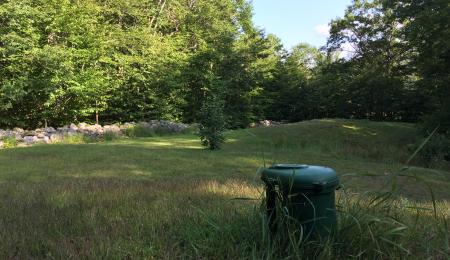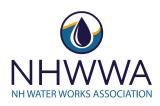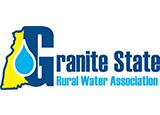Drinking Water
Collaboration, education, assistance and oversight for public water systems and private well owners.
About half of the people (54%) who live in New Hampshire get their household drinking water from public water systems, which serve a population of 25 people or more and are regulated under the state and federal Safe Drinking Water Acts, and everyone uses water from public water systems when away from home at restaurants, schools, workplaces and public places.
The sources of supply for public water systems include lakes, rivers and wells. The other half of the population gets water from unregulated residential wells.
The mission of the NHDES Drinking Water and Groundwater Bureau (DWGB) is to protect public health by ensuring safe and reliable drinking water, through collaboration, education, assistance and oversight.
Naturally occurring contaminants are common in groundwater in New Hampshire. About half of the state’s bedrock wells have radon at levels of concern, and an estimated 30% have arsenic at levels that exceed the 5 ppb limit that is enforceable in public water systems. Iron and manganese are also quite common at levels that taste bad or cause staining of laundry or fixtures. Manganese may also occur at potentially unsafe levels. Fluoride, beryllium and radionuclides other than radon are less common but do occur naturally at levels of concern for human consumption throughout the state.
Dug wells are less likely to have problems with minerals (arsenic, radon, etc.) but are more likely to have issues with bacteria, low pH, road salt and nitrate.
The DWGB provides guidance to public water systems and residential well owners. The water provided by public water systems is regulated and monitored, but residential well water is not. NHDES provides a summary and comparison of differences between public water service and a private residential well supply for residents considering alternatives for their home’s water supply. NHDES recommends that residential well users test their water supply to determine whether the water should be treated before consuming it.
Sodium and chloride from salt used on roads during winter weather or used in drinking water treatment system are detected in many residential wells and statewide concentrations in groundwater are generally increasing. Nitrate from septic systems and landscape fertilizer can be detected at levels of concern in residential wells. Volatile organic compounds (VOCs) occur statewide in groundwater, but a number of activities and land uses seem to be associated with a higher likelihood of contamination. These include nearby fuel spills or leaks and businesses that use petroleum products or petroleum-based chemicals.
Poly- and perfluoroalkyl substances (PFAS) are in products that are used in domestic, commercial, institutional and industrial settings. PFAS have also been used to fight certain types of fires. PFAS have affected wells throughout New Hampshire but are more frequently detected at elevated levels in southern New Hampshire.
Related Content
Spotlights
VIEW ALL SPOTLIGHTSPoly- and Per- Fluoro Alkyl Substances (PFAS) in NH’s Drinking Water
PFAS has become a contaminant of concern in drinking water. Often called forever chemicals, this large family of chemicals is being studied and tested to understand its occurrence and risk in drinking water.
Did you know?
Did you know?
Are you looking for a water well record? Are you a public water system searching for your master sampling schedule, associated forms, or Permit-to-Operate? You can find them on the NHDES OneStop website.












